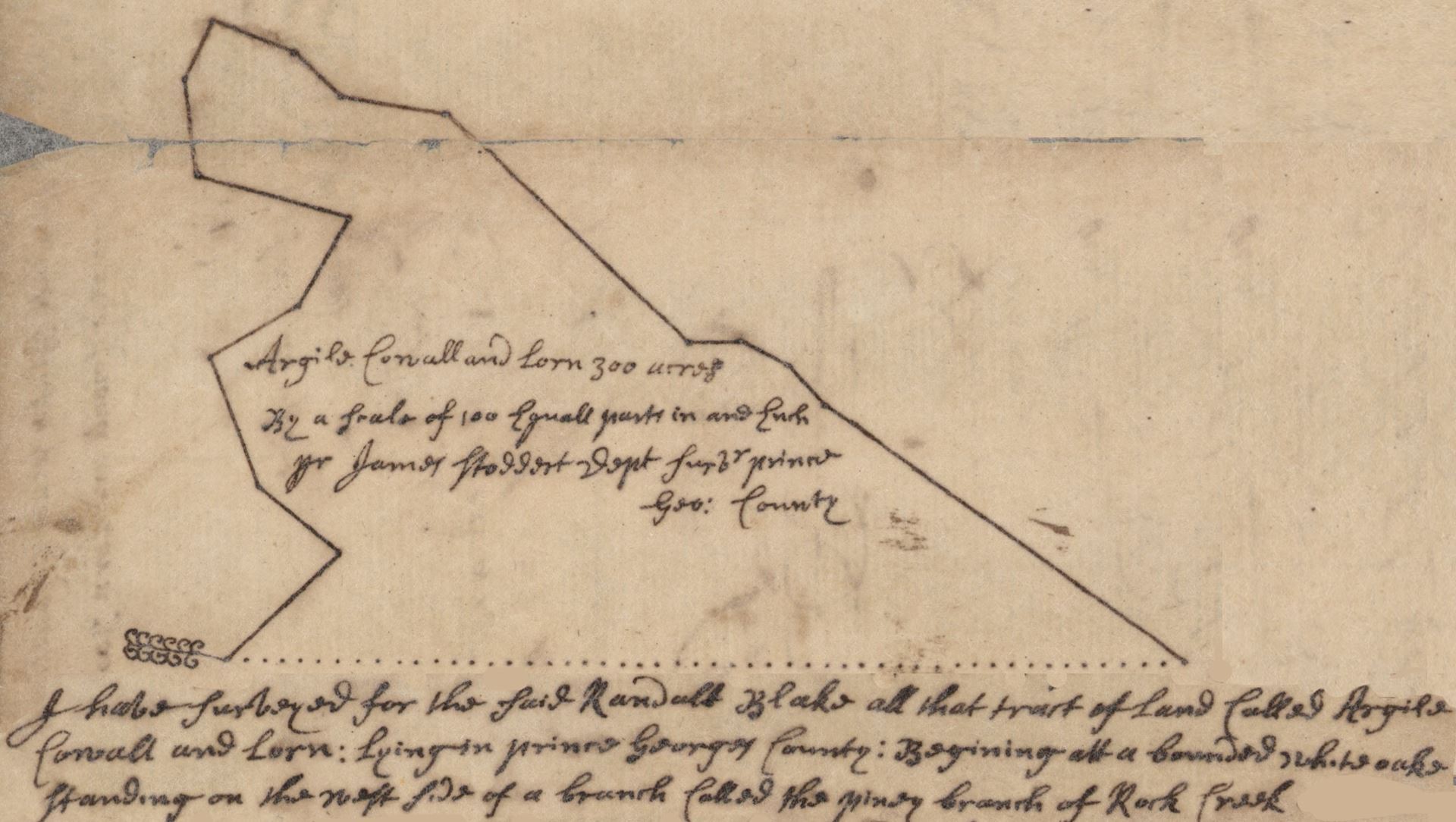
In 1720, one year after the Argyle estate was established, surveyor James Stoddert created the first map of what was to become Crestwood. He described 300 acres owned by Randall Blake starting at a “white oake” along “the piney branch of Rock Creek.” The map is drawn with north on the right.
300 YEARS FOR OUR 300 ACRES
By David Swerdloff
Our neighborhood is about to begin its 300th year!
Perhaps we should celebrate with bagpipes, because—on March 10, 1719—Crestwood got its start as a 300-acre estate named after three places in western Scotland. Those 300 acres still define the map of Crestwood today (minus some land taken for Rock Creek Park and a small pie-slice east of 16th Street and north of Webster).
The original parcel began—in Prince George’s County in the Maryland colony—with Major John Bradford. Related by marriage to the influential Carroll family, Bradford was a member of the Maryland General Assembly. From 500 acres he had received a month earlier from Lord Baltimore, he assigned 300 to a man named Randall Blake. So little is known about Blake that his name sometimes appears as Randolph or Black.
Just as Georgetown began as “Rock of Dumbarton” (part of a wider area called New Scotland Hundred), Blake drew on centuries-old Scottish landmarks to name his property. He settled on three spots north and west of Dumbarton, calling his parcel “Argile Cowall and Lorn.” There would be various spellings of the name—but that’s how it was written on the first survey of the land in 1720. Over the years, the property would simply be described as the Argyle estate.
We don’t know if Blake ever took up residence in Crestwood. In any case, he sold the land back to Bradford before the Major died in 1726. Bradford’s will did provide the name of a tenant on the estate—so we can identify Peter Hyatt as an early resident.
Bradford’s son ran into financial trouble and sold the 300 acres to the county sheriff, Richard “Squire” Lee, who lived at the historic Blenheim estate along the Potomac near where the Harry Nice Bridge is today. Various members of the Lee family would own the property for the next 100 years. Yes, they were a distant branch of the same family that produced Robert E. Lee.
One question that has always troubled me is why, around the turn of the 19th century, the Peirces didn’t buy the Argyle estate as they were accumulating land along Rock Creek. They were not only living on a neighboring property, but—before constructing Peirce Mill in the 1820s—Isaac Peirce built the nearly identical Argyle Mill.
I believe the answer is that Peirce could not purchase the property because of a legal dispute within the Lee family over its ownership. The case—dealing only with the Argyle estate but setting a national precedent—had to be settled by the US Supreme Court (Dawson’s Lessee v. Godfrey, 1808). It’s a fascinating case about citizenship and land ownership after the establishment of the USA, with the background of some family intrigue about a rich grandmother and her four granddaughters.
So, thanks perhaps to the Supreme Court, the 300 acres remained intact. The estate then attracted a series of owners. There were land speculators like William Redin and Thomas Lilly. In the 1840s Russia’s Ambassador to the United States, Alexander de Bodisco, had constructed on his “country” estate a handsome manor house and other buildings. Finally, Thomas Blagden and his heirs owned and lived here from 1854 until the property began to be developed in the early 20th century.
One of the later developments would be called Crestwood. This year that name marks its 80th birthday. But the neighborhood we now call Crestwood is about to start year number 300. Get the pipers ready!